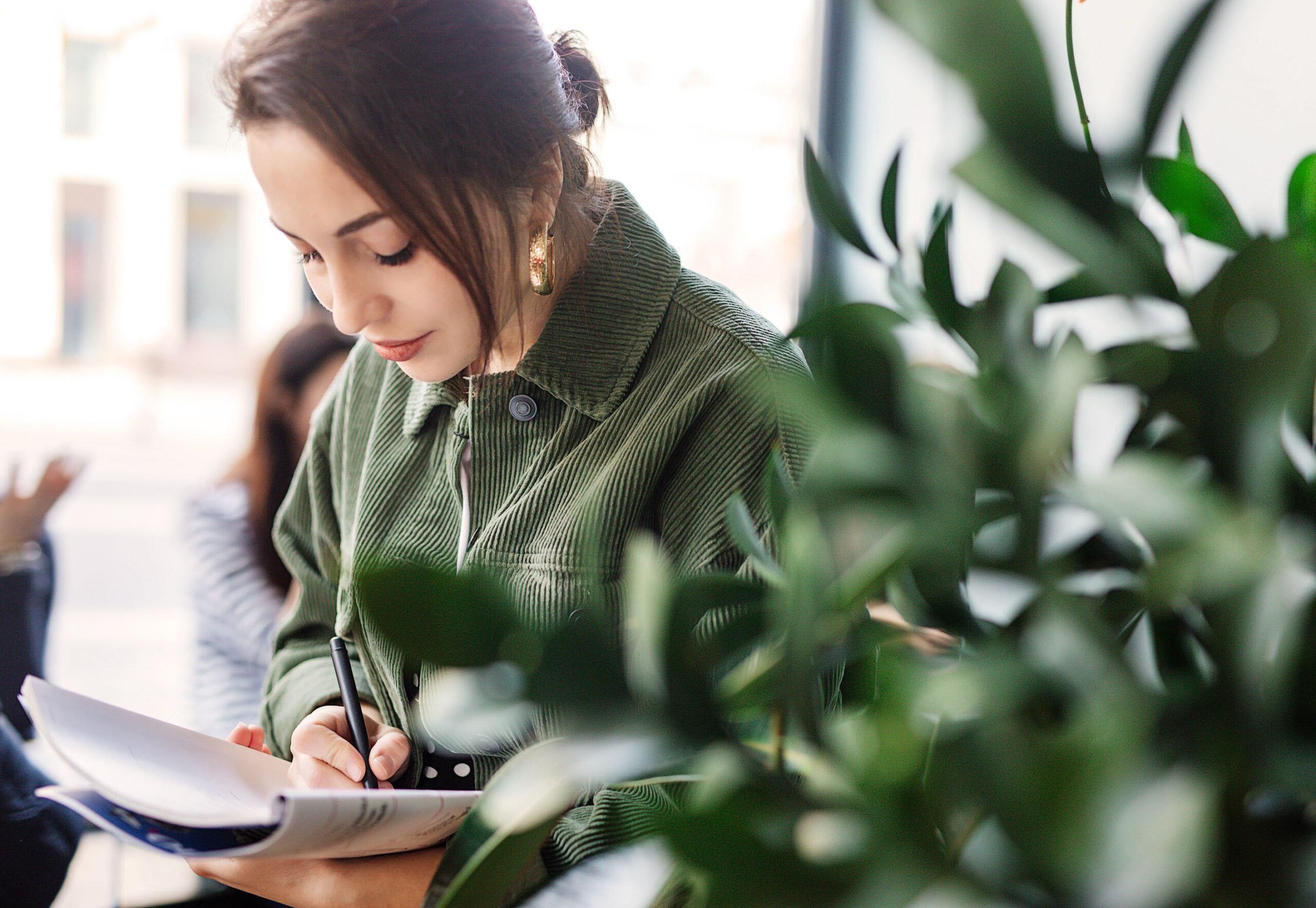Adding plants to a dull office can immediately transform the look and feel of the space. With a plethora of colours, sizes, and shapes available, finding the best indoor plants might seem daunting. That is where our expertise at Prestigious Plantscapes comes in.
For decades, we’ve navigated each office’s unique space and requirements, providing indoor plant hire and maintenance services that result in tailored, vibrant green spaces. Our success lies in crafting bespoke environments that not only enhance the interior design appeal of offices but also leave lasting, positive impressions on clients and employees alike.
This comprehensive guide provides not just practical indoor plant ideas but innovative solutions to invigorate your space, inspired by our extensive portfolio of successful projects. Are you ready to transform your space into a lush environment? Check out our indoor plant ideas below.
Benefits of Indoor Plants
Besides making indoor spaces visually appealing, indoor plants serve a much greater purpose than merely decorations. They help to create cleaner air and boost workspace productivity. Studies show that incorporating house plants or greenery in office spaces can increase productivity by up to 15%, highlighting the significant impact of thought-out plant implementation. This facilitates an office environment that’s not only beautiful but provides health benefits, making it a space where clients and employees want to spend their time.
Indoor Plant Ideas by Design
Every indoor space is unique with different sizes, layouts, colours, and lighting, so there’s no right or wrong. Whether you choose to add a few plants to a hundred plants or be a minimalist, maximalist, or in between is entirely up to you. We’ll provide some indoor plant ideas that fall under each design to help get you started.
Minimalism
Minimalism is all about simplicity, cleanliness, and the principle of “less is more”. A minimalist design focuses on the strategic placement of a few, carefully selected plants to enhance the feeling of serenity and spaciousness. Think of using singular, impactful plants that don’t clutter the space but instead, are eye-catching and add a touch of green elegance to your living room or office space. Let’s find the best indoor plant for you below.
Excellent choices include the snake plant (Dracaena trifasciata), monstera, or Swiss cheese plant (Monstera deliciosa), and ZZ plant (Zamioculcas zamiifolia). These plants have a distinguishable, tall or wide design that enables them to become a focal point in any room, without overwhelming the space or feeling inconveniently placed. These plants are considered low maintenance and align well with the minimalist ethos of reducing fuss and clutter. Choosing low-maintenance plants means a simpler watering schedule which can range from weekly watering in the summer to less frequent in winter, depending on the right conditions.
Plants mentioned:
- Snake plant (Dracaena trifasciata):
Light requirement: They’re extremely adaptable and can thrive in anything from low light to bright, indirect light. They can tolerate some direct sunlight.
Water requirement: They’re very drought-tolerant. Allow the potting soil to dry completely between waterings. In most indoor spaces, water sparingly every 2-6 weeks is enough.
- Monstera / Swiss cheese plant (Monstera deliciosa):
Light requirement: They prefer bright, indirect light but can adapt to lower light conditions. Avoid direct sunlight which can burn their leaves.
Water requirement: The soil should be consistently moist but not waterlogged. Water when the top inch of soil feels dry, typically 1-2 weeks. Mist the leaves regularly to replicate the humid environment of its natural habitat.
- ZZ plant (Zamioculcas zamiifolia):
Light requirement: They thrive in a wide range of light conditions, from low light to bright, indirect sunlight. They’re perfect for offices with limited natural light.
Water requirement: It has excellent drought tolerance thanks to its rhizome that stores water. Let the soil dry out completely between waterings. Look at watering every 2-4 weeks and adjusting for lower light conditions where less frequent watering is needed.
Scandinavian
The Scandinavian design is all about keeping things functional, simple, and connected to nature – a perfect illustration of minimalism. Think light, neutral colours, clean lines, and lots of natural touches together that create an airy, bright, and serene space. A Scandinavian design creates a calm, comfortable, and inviting ambiance.
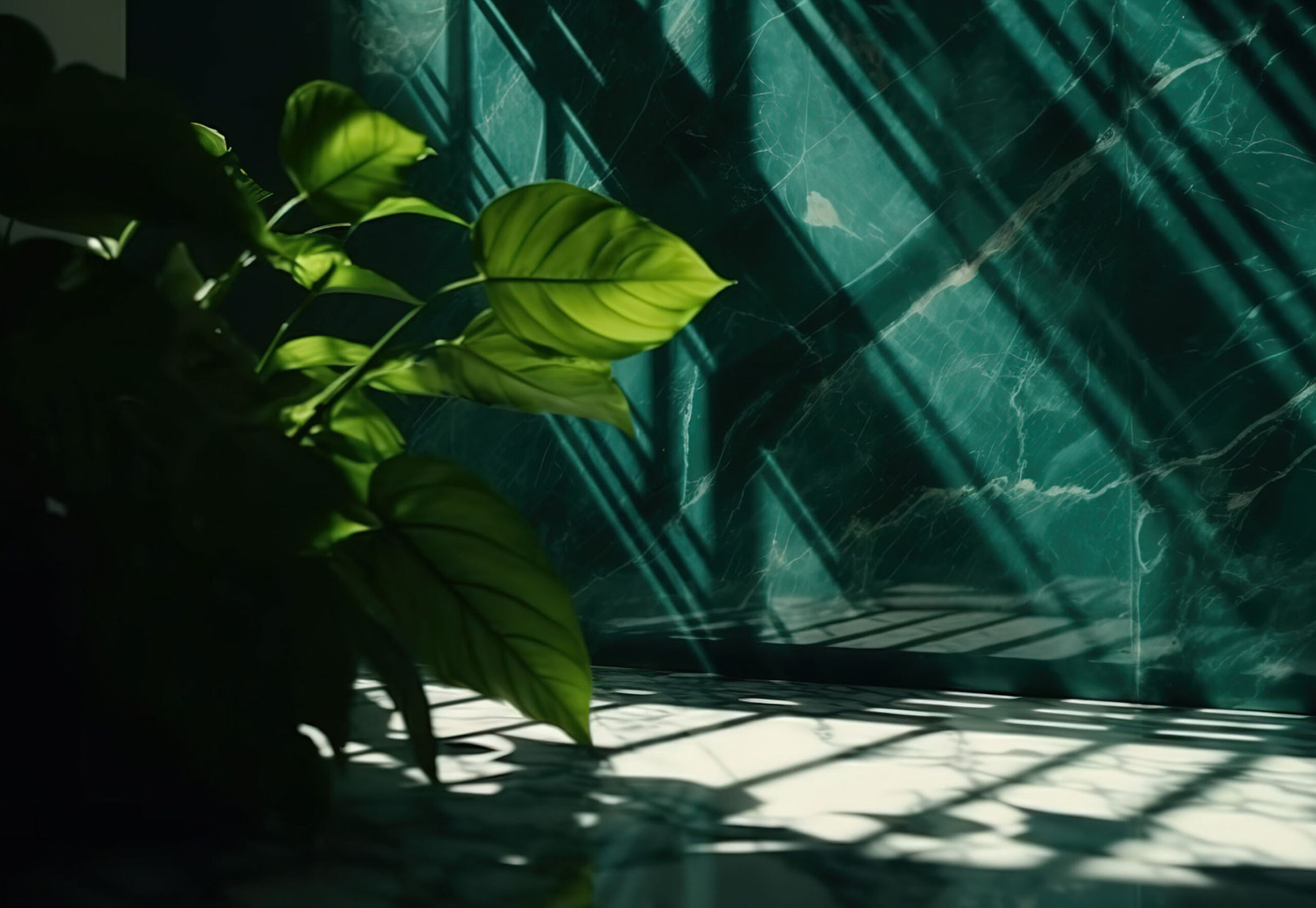
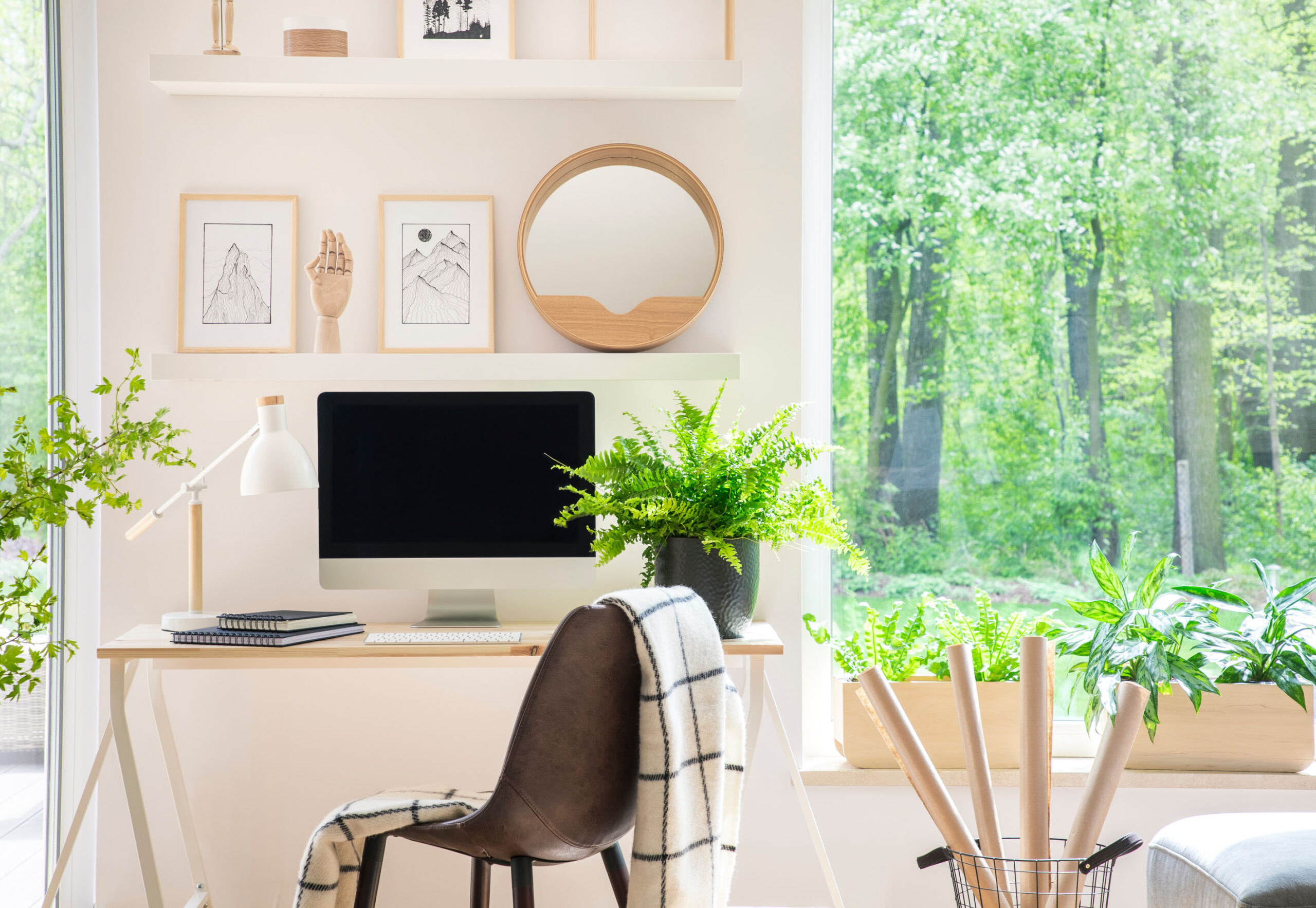
Industrial
An Industrial design draws inspiration from the raw, utilitarian beauty of factories and warehouses. Think exposed brick walls, polished concrete floors, and metal detailing. This style often incorporates minimalist furniture and plants with clean lines and a utilitarian aesthetic. Its neutral colour palette is predominantly grayscale to highlight the industrial charm.
An Industrial design blends the industrial age and modernity to create a space that feels open, airy, and contemporary. Plants in industrial designs can soften hard edges and add a splash of life and colour. Some examples include succulents in concrete planters, large, leafy greens in sleek metal pots, and a series of hanging terrariums like pothos, or devil’s ivy (Epipremnum aureum) that add a natural contrast to the industrial backdrop. This maintains the minimalist aesthetic while bringing warmth and vitality to the space.
Plants mentioned:
- Succulents (general):
Light requirement: They prefer bright, indirect light but can tolerate direct light in the morning. They should be placed near east or west-facing windows.
Water requirement: Like cacti, succulents prefer the soil to dry out completely before watering.
- Pothos, or devil’s ivy (Epipremnum aureum):
Light requirement: Thrives in a range of lighting conditions, from low light to bright, indirect light. Avoid direct sunlight as it can scorch the leaves.
Water requirement: Allow the top inch of soil to dry out between waterings. Typically, water every 1-2 weeks.
- Heartleaf philodendron (philodendron hederaceum):
Light requirement: It prefers moderate to bright, indirect light but can tolerate low light. Avoid direct sunlight to prevent damage to leaves.
Water requirement: Keep the soil consistently moist but not soggy. Water when the top inch of soil feels dry to the touch.
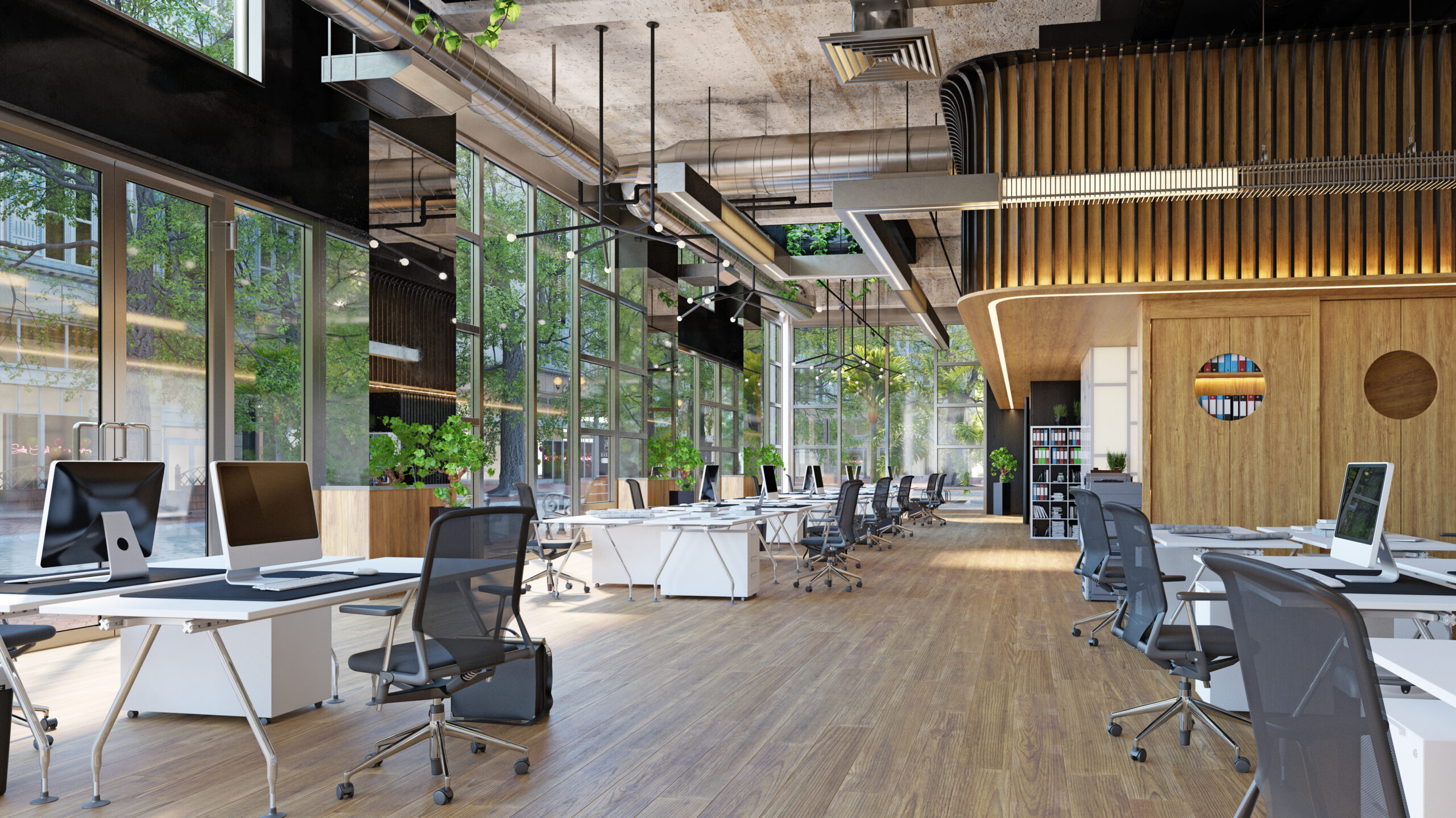
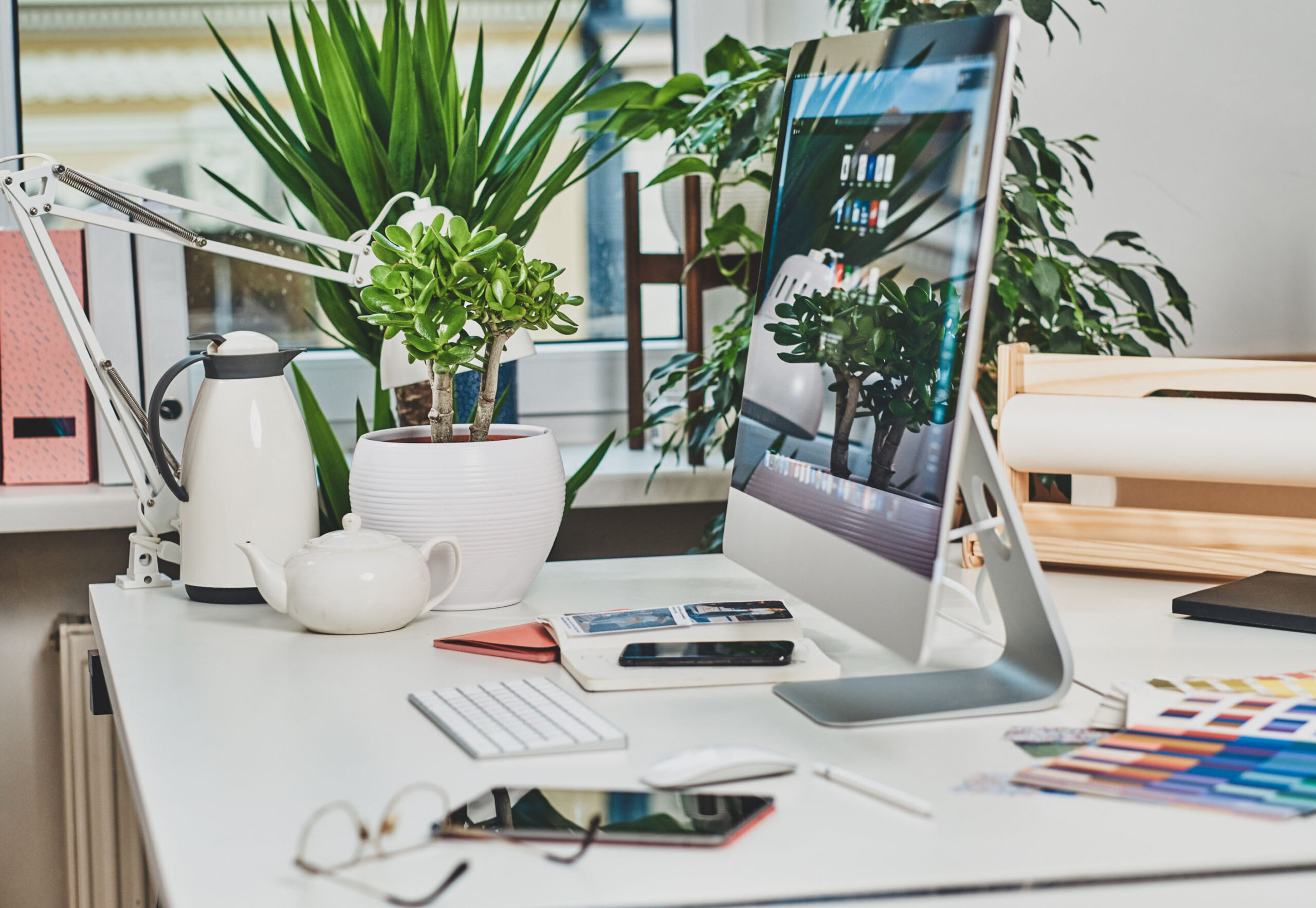
Contemporary
A Contemporary design blends clean with modern materials and technology for a sleek and sophisticated look. It maintains a monochrome or neutral colour palette but often introduces bold contrasts through texture or shape. Think light colours, a mix of shapes, and black detailing.
Plants in contemporary designs are those with striking forms and minimal care requirements, such as tall cacti, sculptural succulents, or snake plants. These plants add life and vibrancy to the space while blending seamlessly with the modern aesthetic.
Plants mentioned:
- Cacti:
Light requirement: They thrive in bright, direct light so they should be placed near south-facing windows where they can soak up plenty of sunlight.
Water requirement: They should be watered sparingly around every 2-3 weeks. Allow the soil to completely dry out between waterings.
- Succulents:
Light requirement: They prefer bright, indirect light but can tolerate direct light in the morning. They should be placed near east or west-facing windows.
Water requirement: Like cacti, succulents prefer the soil to dry out completely before watering.
- Snake plant (Sansevieria):
Light requirement: They are versatile in that they can thrive in low light to bright, indirect light. They’re perfect for indoor spaces without a lot of natural sunlight.
Water requirement: They should be watered sparingly, especially in the winter. Allow the soil to dry out between waterings. Watering every 2-4 weeks is enough.
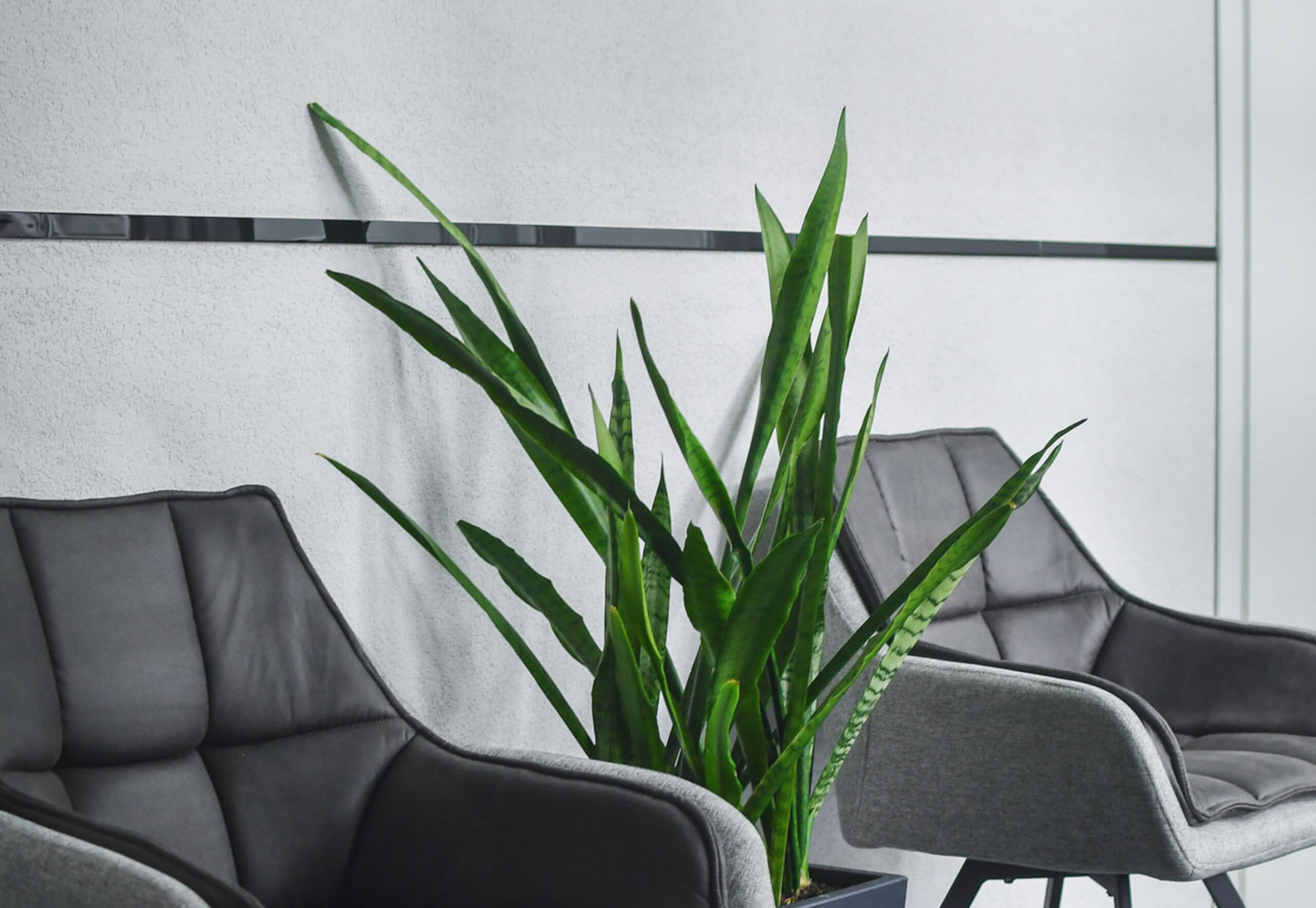
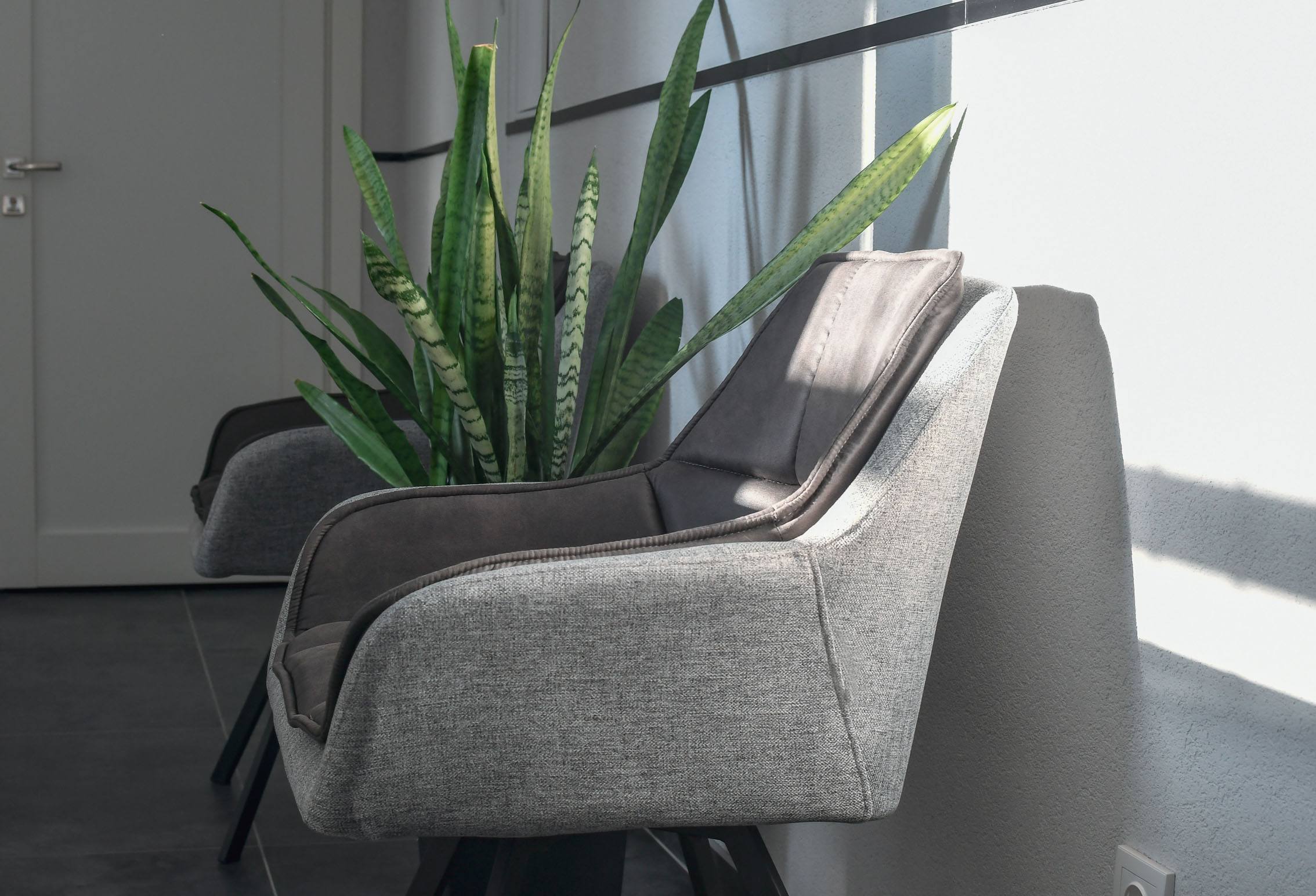
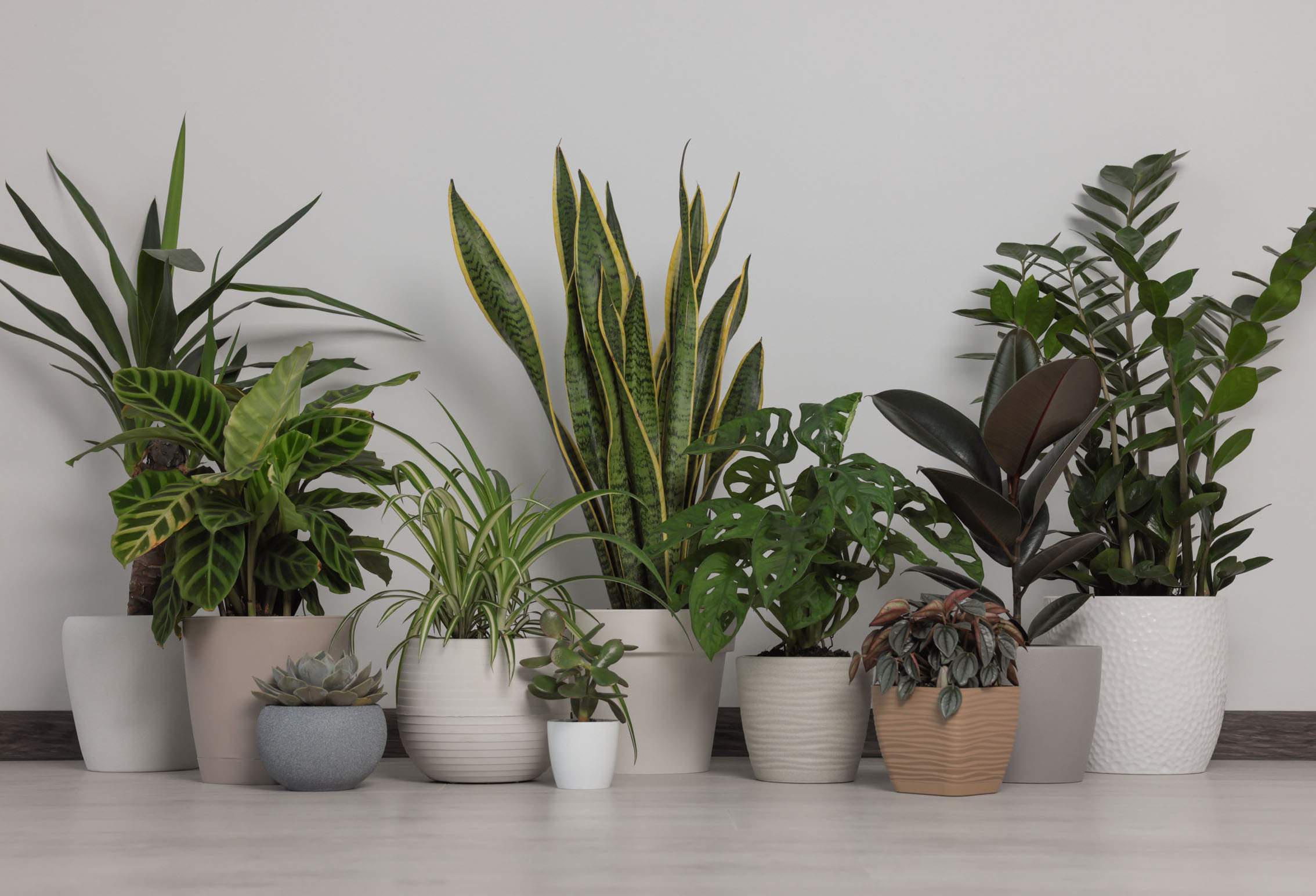
Maximalism
Maximalism is the polar opposite of minimalism that celebrates abundance, colour, and texture. It’s all about going over the top to create a lush, vibrant space filled with a variety of plants of different sizes, shapes, and colours.
Plants in maximalist designs require layers, diversity, and density, combining tall trees, mid-sized bushes, and small, decorative plants on desks and shelves. Some choices include pothos (Epipremnum aureum), spider plants (Chlorophytum comosum), rubber plants (ficus elastica), and peace lily (spathiphyllum). Pothos’ fast-growing vines and variegated leaves can quickly fill shelves and hanging baskets, while spider plants add texture and variety. Rubber plants are known for their large, glossy leaves that add height and drama.
With maximalism, you can add plants that you like and multiply them. In reality, you could choose a minimalist design and add more plants to your liking. It is worth noting that full-blown maximalism might be challenging to implement in many office environments due to budget, space constraints, health and safety regulations, and the need for a professional atmosphere. However, elements of maximalism can still be incorporated to invigorate and personalise office spaces without overwhelming them or causing practical issues. We’ll provide some maximalism designs and how you can incorporate elements from each of them into your office.
Plants mentioned:
- Pothos, or devil’s ivy (Epipremnum aureum):
Light requirement: Thrives in a range of lighting conditions, from low light to bright, indirect light. Avoid direct sunlight as it can scorch the leaves.
Water requirement: Allow the top inch of soil to dry out between waterings. Typically, water every 1-2 weeks.
- Spider plants (Chlorophytum comosum):
Light requirement: They thrive best in bright, indirect light but can tolerate partial shade and less ideal light conditions.
Water requirement: Water thoroughly but let the soil dry out between waterings. It prefers slightly moist soil during the growing season and less water in winter.
- Rubber plants (Ficus elastica):
Light requirement: Prefers bright, indirect light but can tolerate lower light levels. Avoid direct sunlight as it can scorch the leaves.
Water requirement: Allow the top of the soil to dry out between waterings. Water less frequently in the winter.
- Peace lily (spathiphyllum):
Light requirement: Prefers low to medium, indirect light. Can tolerate low-light conditions but blooms more frequently with more light.
Water requirement: Keep the soil consistently moist and water thoroughly when the top inch of social becomes dry. Mist the leaves to help increase humidity.
Tropical Jungle
If feasible, a tropical jungle theme transforms offices into an exhilarating escape from the mundane, immersing employees and clients in a world of lush, green leaves. This vibrant approach goes beyond mere aesthetics but creates an environment that stimulates the senses, promotes well-being, and inspires creativity.
A tropic jungle design involves filling spaces with an abundance of greenery, from towering palms that reach for the ceiling to broad-leafed monsteras that sprawl across communal areas. Think of hanging plants like pothos or philodendrons, with their heart-shaped leaves cascading down shelves, window sills, and ceiling beams to add texture, variety, and colour around the office.
This creates a microclimate that not only looks beautiful but drastically enhances the air quality and natural humidity to make the office environment more comfortable. Implementing a tropical jungle design may require thoughtful planning, especially if selected plants have varying maintenance needs.
Without turning your office into a jungle, consider grouping multiple plants in corners, or utilising ceiling beams and shelves for hanging plants. This way, you can have clusters of greenery that don’t overwhelm the space but are thoughtful spots of abundance.
Plants mentioned:
- Pothos, or devil’s ivy (Epipremnum aureum):
Light requirement: Thrives in a range of lighting conditions, from low light to bright, indirect light. Avoid direct sunlight as it can scorch the leaves.
Water requirement: Allow the top inch of soil to dry out between waterings. Typically, water every 1-2 weeks.
- Heartleaf philodendron (philodendron hederaceum):
Light requirement: It prefers moderate to bright, indirect light but can tolerate low light. Avoid direct sunlight to prevent damage to leaves.
Water requirement: Keep the soil consistently moist but not soggy. Water when the top inch of soil feels dry to the touch.
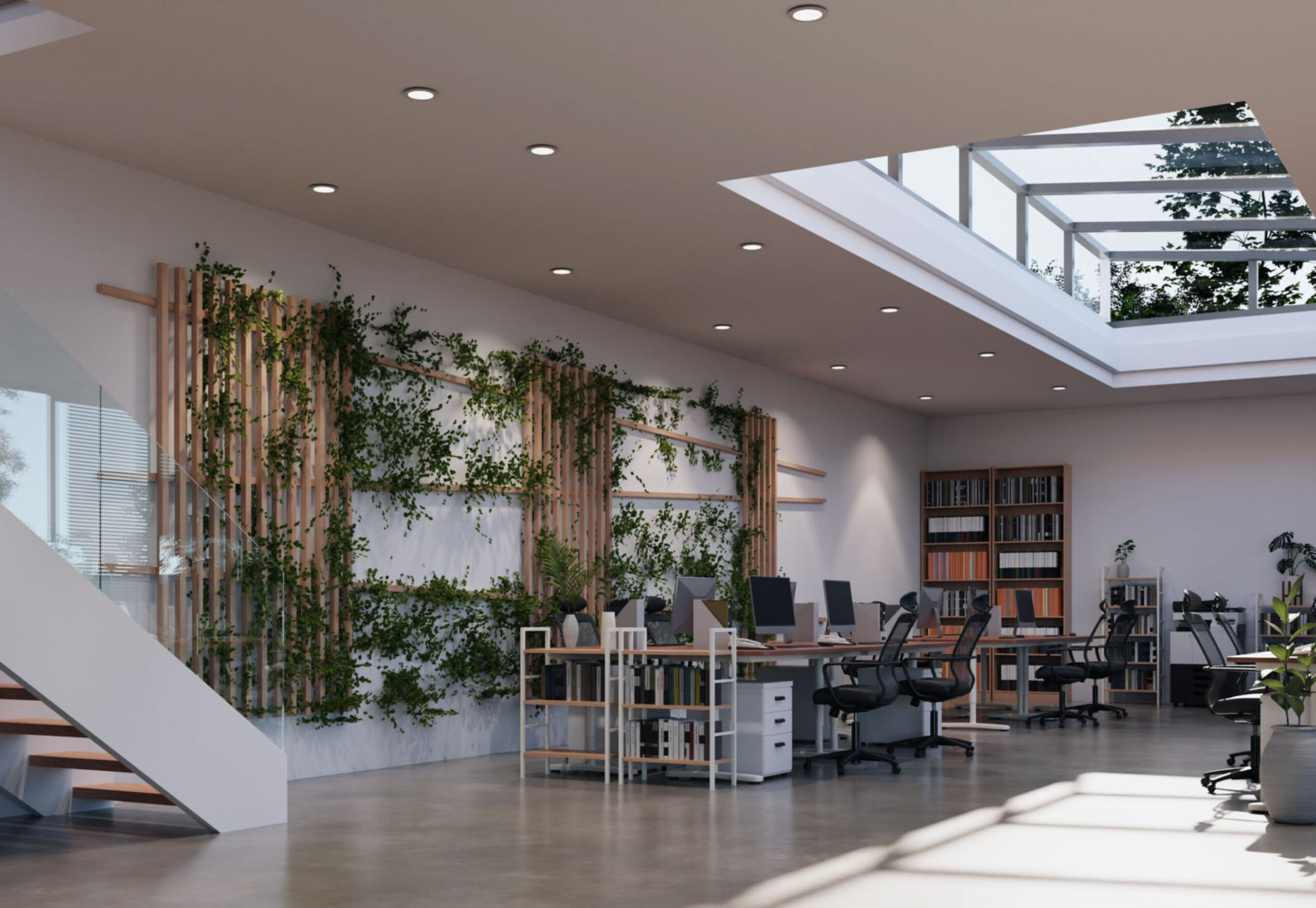

Modern Eclectic
Modern Eclectic is all about celebrating individuality and boldness, blending contemporary design with a variety of textures, colours, and patterns to create a unique space that reflects the people who work in it. It’s about creating a personalised environment where creativity has no limits.
Plants in a Modern Eclectic design require a jungle of diversity. Think of a large, leafy green plant like a fiddle leaf fig, and air plants floating in geometric terrariums. Tropical plants like the bird of paradise (Strelitzia) or artificial, lush palms can add an exotic touch.
This maximalist theme thrives on the principle that more is more, yet it maintains a balance that avoids overwhelming the senses. It’s about finding harmony in diversity, ensuring each piece serves a purpose and adds to the collective beauty of the space.
With Modern Eclecticity, there truly is no right or wrong approach – it’s about embracing the freedom to experiment and evolve. It’s an ongoing process of curating and arranging to make the office a dynamic space that adapts and grows with its employees.
Plants mentioned:
- Fiddle leaf fig (Ficus lyrata):
Light requirement: Prefers bright, indirect light but can tolerate some direct sunlight. However, it may require acclimation to prevent sunburn.
Water requirement: Water when the top inch of soil is dry, and less in the winter. It prefers high humidity and does not like to be overwatered.
- Bird of paradise (Strelitzia):
Light requirement: Thrives in bright, indirect light and can tolerate some direct sunlight.
Water requirement: Keep the soil moist during the growing season and reduce watering in winter. It also prefers high humidity.
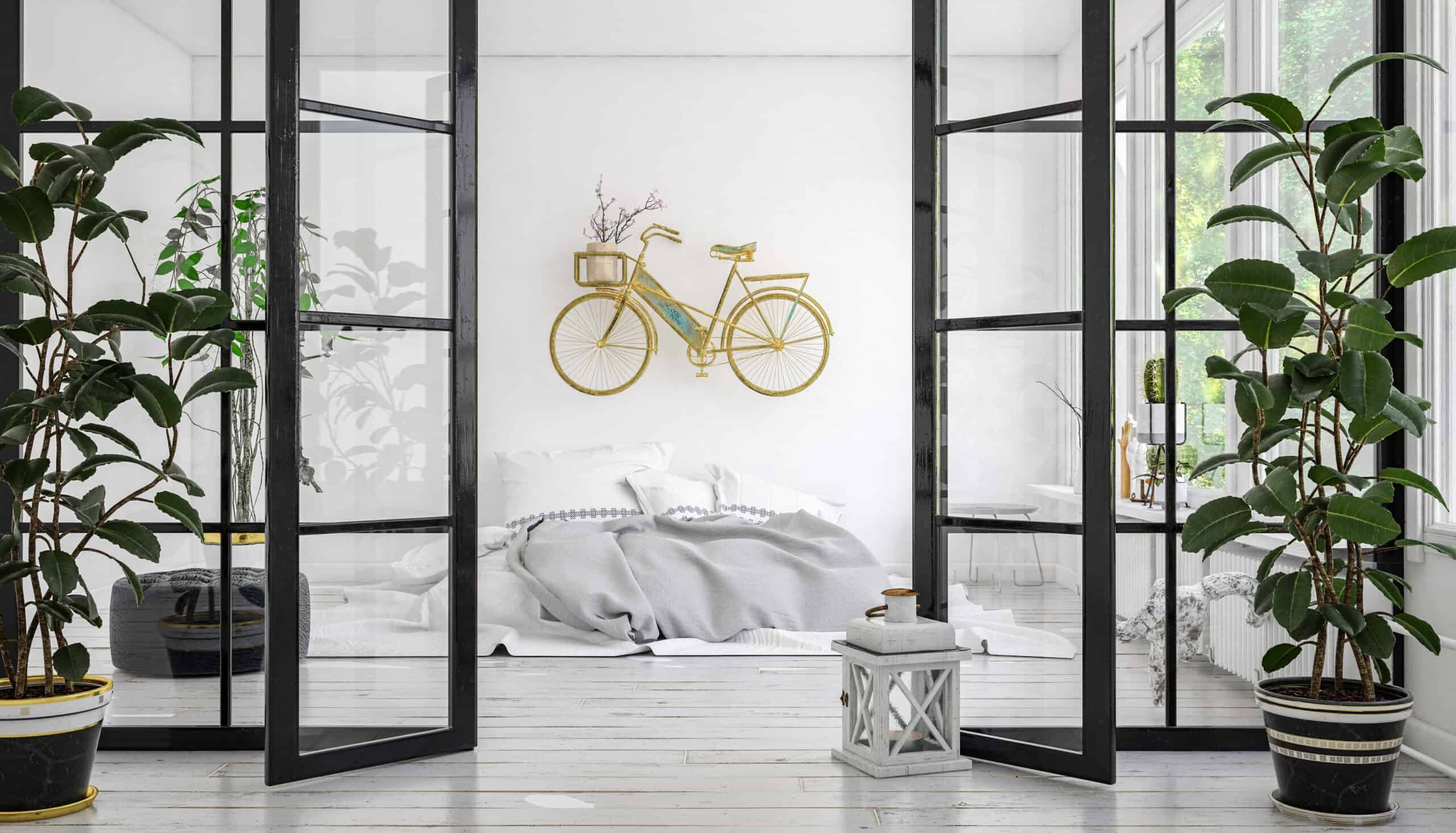
The Importance of Lighting
Every office is unique in regards to its access to natural light. Since windows vary greatly in size, location, and exposure, there’s no one-size-fits-all approach to the plants you select for your office. Understanding the lighting available in your office is crucial because plants, just like us, plants thrive under different lighting conditions. Some offices enjoy abundant sunlight throughout the day, while others may see only a few hours of indirect light. Recognising these conditions is the first step in choosing plants that will not just survive but thrive in your environment.
Indirect Light
A key concept to understand in indoor plant care is indirect light. This is light that fills the room without directly shining on plants. It’s ideal for many indoor plants as it provides the light they need to grow without the risk of sunburn from direct exposure.
Ideal Spaces for Indirect, Bright Light Plants
- A couple of metres away from south- or east-facing windows to avoid direct sunlight but exposure to bright, ambient light.
- Near windows covered with sheer curtains that diffuse light to offer brightness without the harshness.
- Common areas with large windows, where plants can be strategically placed to benefit from natural light without direct sun exposure.
Direct Light
Direct sunlight is natural light that shines through windows without obstruction. This type of light is suitable for plants that are naturally adapted to direct sun, such as cacti and succulents. However, this may be too intense for many common indoor plants, which can burn leaves.
Low Light
Low light is often found in indoor spaces that are far from windows or in rooms with north-facing windows. While it may seem limiting, there are many plants, such as the ZZ plant (Zamioculcas zamiifolia) and snake plant (Dracaena trifasciata) that thrive in these conditions. They’ve adapted to grow in the understory of forests and require less sunlight.
Transform Your Workspace with Prestigious Plantscapes
Now that you’ve discovered the transformative power of plants, it’s time to bring that inspiration into your office. Whether you’re drawn to the clean lines of minimalism, the vibrant energy of maximalism, or something uniquely in between, Prestigious Plantscapes is here to help you create the perfect green space for your work environment.
We provide indoor plant design services and source the highest quality plants and products from local nurseries and stockists. Work with our professional consultants to discuss your goals and budget. We collaborate with interior designers and architects to not only create a beautiful space but also a healthy and welcoming environment for your employees and clients.
Contact us today to schedule a consultation or browse our website to learn more about our services. Let’s help you create a more productive and greener office space.

